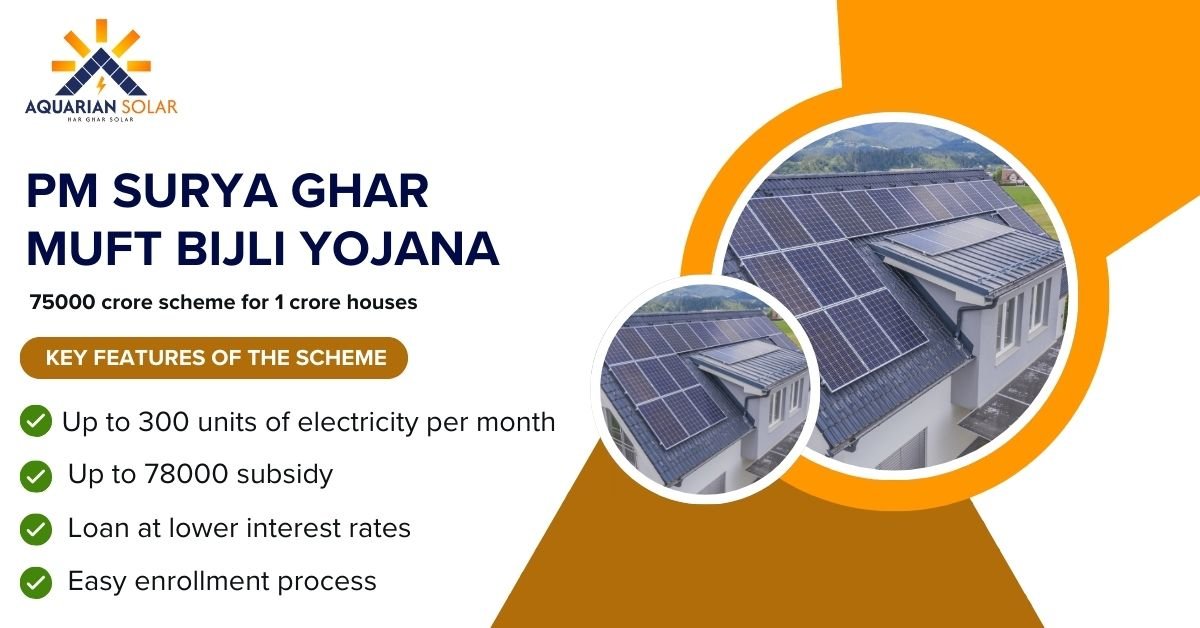As the demand for clean energy rises, more Indian households are turning toward solar power to meet their energy needs. But beyond the environmental benefits, solar energy offers a powerful financial advantage—significant government incentives that can drastically reduce the cost of installing a residential solar system.
In this article, we explore how you can maximize your savings by tapping into various . Whether you’re just beginning to explore solar energy or already planning your installation, understanding these schemes can help you make an informed and cost-effective decision.
Why Go Solar in India?
India, with its abundant sunlight and increasing power demands, is ideally positioned to benefit from solar energy. Residential solar solutions can:
- Cut electricity bills by up to 90%
- Provide energy independence
- Increase the value of your property
- Reduce your carbon footprint
But what truly sweetens the deal is the support provided by central and state governments in the form of subsidies, tax benefits, and policy frameworks aimed at making solar adoption easier and more affordable.
National Solar Mission and India’s Push for Solar Energy
Launched in 2010 under the National Action Plan on Climate Change (NAPCC), the Jawaharlal Nehru National Solar Mission (JNNSM) laid the foundation for India’s solar journey. Its goal is to establish India as a global leader in solar energy by creating conducive conditions for solar manufacturing, installation, and adoption.
The mission aims for 280 GW of solar power by 2030, with residential rooftops forming a crucial part of that target. To make this feasible, the government has rolled out several incentive schemes for homeowners to reduce upfront costs and speed up solar adoption.
Central Government Subsidy: Grid-Connected Rooftop Solar Program
One of the key drivers of residential solar adoption in India is the Central Financial Assistance (CFA) provided by the Ministry of New and Renewable Energy (MNRE).
What’s covered?
Under the Phase II of the Rooftop Solar Programme, the MNRE provides direct subsidies for grid-connected rooftop solar systems installation by residential consumers.
As of 2025, here’s how the central subsidy works:
- Up to 3 kW: 40% subsidy on the benchmark cost
- 3 kW to 10 kW: 40% for the first 3 kW, then 20% for the next 7 kW
- Above 10 kW: No subsidy on excess capacity, but full benefit up to 10 kW
So, for example, if you install a 5 kW system, you receive a 40% subsidy on 3 kW and 20% on the remaining 2 kW.
This scheme makes solar affordable for average households across India. And if you install through empanelled vendors like Aquarian Solar, the process is smooth, with subsidy applications handled on your behalf.
State-Level Incentives and Net Metering Policies
In addition to the central subsidy, individual states offer their own incentives to promote residential solar. While the exact benefits vary by state, many include:
- Additional subsidies: Some states like Delhi, Gujarat, and Maharashtra offer additional rebates over and above the central subsidy.
- Free maintenance: Certain state DISCOMs provide free maintenance for 5 years.
- Reduced property tax: Some urban local bodies provide discounts on property tax for solar-equipped homes.
Each state also implements its net metering policy, allowing consumers to send excess electricity generated by their solar system back to the grid in exchange for credits.
Why net metering matters ?
Net metering helps maximize savings by:
- Offsetting electricity bills through surplus generation
- Reducing your payback period
- Encouraging efficient energy consumption
The policy framework and approval process vary across India, but with a trusted solar provider like Aquarian Solar, you’ll receive end-to-end support to navigate the paperwork and installations seamlessly.
PM Surya Ghar: Muft Bijli Yojana – A Game Changer for Homeowners

In early 2024, the Government of India launched the PM Surya Ghar: Muft Bijli Yojana, aiming to bring solar to 1 crore households. This initiative offers free electricity up to 300 units/month for eligible households.
Key benefits of the scheme include:
- Subsidies up to ₹78,000 for solar panel installation
- Free electricity: Households generating surplus solar energy get free monthly units
- Easy financing: Partnered banks and NBFCs offer low-interest loans for solar adoption
This initiative is expected to accelerate solar adoption in middle- and lower-income groups, making clean energy not just a green choice, but an economically smart one.
Loans and Tax Benefits for Residential Solar
To encourage solar installations further, the government and banks have made financing solar easy and accessible.
Solar Loans:
Many public sector and private banks offer low-interest loans for rooftop solar systems under the Priority Sector Lending (PSL) guidelines. These loans are:
- Collateral-free (up to certain limits)
- Offered at lower interest rates
- Payable over flexible tenures (typically 5–7 years)
Income Tax Benefits:
Although currently there are no direct income tax rebates on solar panels for residential users (unlike commercial setups), the reduction in electricity bills and subsidies already offer an effective return on investment. There’s a growing demand for tax deductions on residential solar in upcoming budgets, so this space is worth watching.
How Much Can You Save?
Let’s consider a typical scenario. A family installs a 5 kW rooftop solar system.
- Approximate cost: ₹3.5 lakh
- Central subsidy: ₹78,000 (based on slab rates)
- Net effective cost: ₹2.72 lakh
Now, this system can produce around 20 units per day, translating to 600 units per month. If your average electricity rate is ₹8/unit, this is a saving of ₹4,800/month, or over ₹57,000 annually.
That means you recover your long-term investment in under 5 years, and with a system life of 25 years, the savings keep growing long after your payback period.
How Aquarian Solar Helps You Maximize These Benefits
At Aquarian Solar, our mission is to make solar energy accessible and affordable for all. We simplify the transition to solar through:
- Free site surveys and system design consultation
- End-to-end handling of subsidy applications
- Installation by certified technicians
- Assistance with net metering and DISCOM approvals
- Long-term maintenance and service packages
By working with us, you ensure that you’re not just installing solar for home —but installing it the right way, with maximum benefit and zero hassle.
Key Considerations Before Going Solar
Before applying for subsidies or starting your installation, here are a few points to keep in mind:
-
Eligibility
- The central subsidy applies only to residential grid-connected systems.
- You must install the system through an MNRE-empanelled vendor.
-
System Sizing
- Your subsidy is capped at 10 kW, so size your system carefully based on your average monthly electricity use.
-
Documentation
- Keep property documents, electricity bills, and ID/address proof ready.
- Apply through your state’s DISCOM portal or get assistance from your solar provider.
-
Maintenance
- Choose systems with good warranties (minimum 25 years for panels).
- Some states and vendors offer AMC packages for worry-free maintenance.
Final Thoughts: A Brighter, Cheaper Future Awaits
With the right mix of government incentives, financing options, and expert installation, going solar in India today is not only good for the planet but also great for your wallet and there good empact on environment.
The Indian government’s strong push toward clean energy, backed by schemes like PM Surya Ghar and MNRE subsidies, has made residential solar more accessible than ever. Whether you’re looking to reduce monthly electricity bills or become more energy independent, now is the time to take advantage of the available incentives.
At Aquarian Solar, we’re committed to helping you make the most of your solar investment. From subsidy assistance to net metering setup, we’ve got you covered every step of the way.
Ready to maximize your savings with solar?
Contact us today at Aquarian Solar for a free consultation and find out how much you can save by switching to clean, renewable energy.





